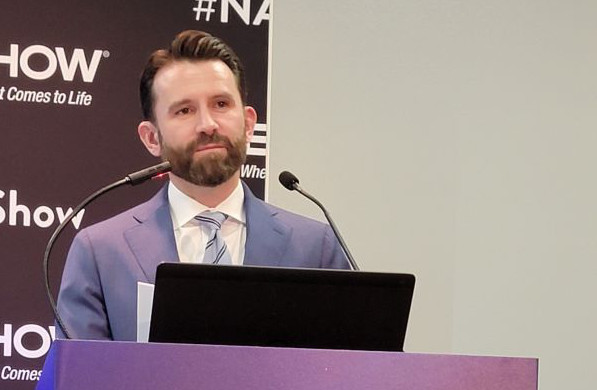Broadcast associations advise FCC on national broadband plan
As the FCC considers how best to allocate spectrum while developing a national broadband plan, it should assign a premium to public policy goals being served by current spectrum use, the NAB and Association for Maximum Service Television (MSTV) told the agency in comments filed last week.
The comments, filed Oct. 23 in response to a commission inquiry into spectrum for broadband, offer the advice in answering a specific question posed by the commission in seeking comments: What are the key issues in moving spectrum allocations toward their highest and best use in the public interest?
The added public policy consideration given existing spectrum while assessing its “efficiency and productivity” should take into account more than financial benefits, the associations said. For instance, as relates to broadcast TV, “core public interest goals,” like providing local news, emergency information, universal service and educational programs, must be taken into account. According to the filing, “to ignore the public policy goals underlying the TV broadcast service would lead to spectrum management decisions that disserve the public interest.”
A major component that must be considered when contemplating moving spectrum allocations to achieve their “highest and best use” is value, the associations said. For instance, spectrum currently used for public safety communications likely would be reallocated to the commercial wireless industry if judged only on revenue obtained and spectral efficiency on a day-to-day basis, the comments said. However, “such an approach to spectrum management would fail terribly to serve the public’s interest in a robust and reliable” infrastructure for public safety communications.
The commission must also consider “the investment in equipment and services” provided over a given band in determining value, according to the comments. The associations pointed out that in the context of TV, such an assessment must take into account that consumers have spent more than $25 billion in HDTV receivers and more than $2 billion dollars — subsidized by government coupons — on DTV converter boxes. Additionally, broadcasters have invested billions in converting their infrastructure to support DTV.
The comments also address three other questions raised by the FCC:
• What is the ability of current spectrum allocations to support next-generation build outs and the anticipated surge in demand and throughput requirements?
• What spectrum bands are best suited to support fixed wireless broadband?
• What is the ability of current spectrum allocations to support both the fixed and mobile wireless backhaul market?
Regarding the ability of current spectrum allocations to support next-generation build outs, the comments of the associations pointed out that in bands below 3.7GHz, which the commission specifically directed its inquiry toward, a total of 507MHz has been licensed to provide “significant, new wireless broadband deployment” in the future. The comments pointed out that 82MHz of that spectrum was made available by the completion of the DTV transition in June and that an additional “substantial amount of unlicensed and ‘licensed-lite’ spectrum has been made available for broadband use.”
Get the TV Tech Newsletter
The professional video industry's #1 source for news, trends and product and tech information. Sign up below.
Addressing the question of which spectrum is best suited for fixed wireless broadband service, the associations identified higher-frequency bands, including 5GHz band and as high as the 70GHz, 80GHz and 90GHz bands. According to the comments, while the propagation characteristics of these higher bands are less desirable for mobile use, fixed applications where known transmit and receive antenna locations are used line of sight can be established for reliable transmission.
Responding to the commission inquiry about spectrum allocations to support fixed and mobile backhaul, the associations identified using TV white spaces in rural areas where broadcast bands “are used less intensively.” Using TV white spaces in such applications with the “appropriate technical protections” would mean unused portions of the TV band could be employed for fixed broadband service without “undermining consumers’ access to free, over-the-air DTV or new mobile DTV services.”
